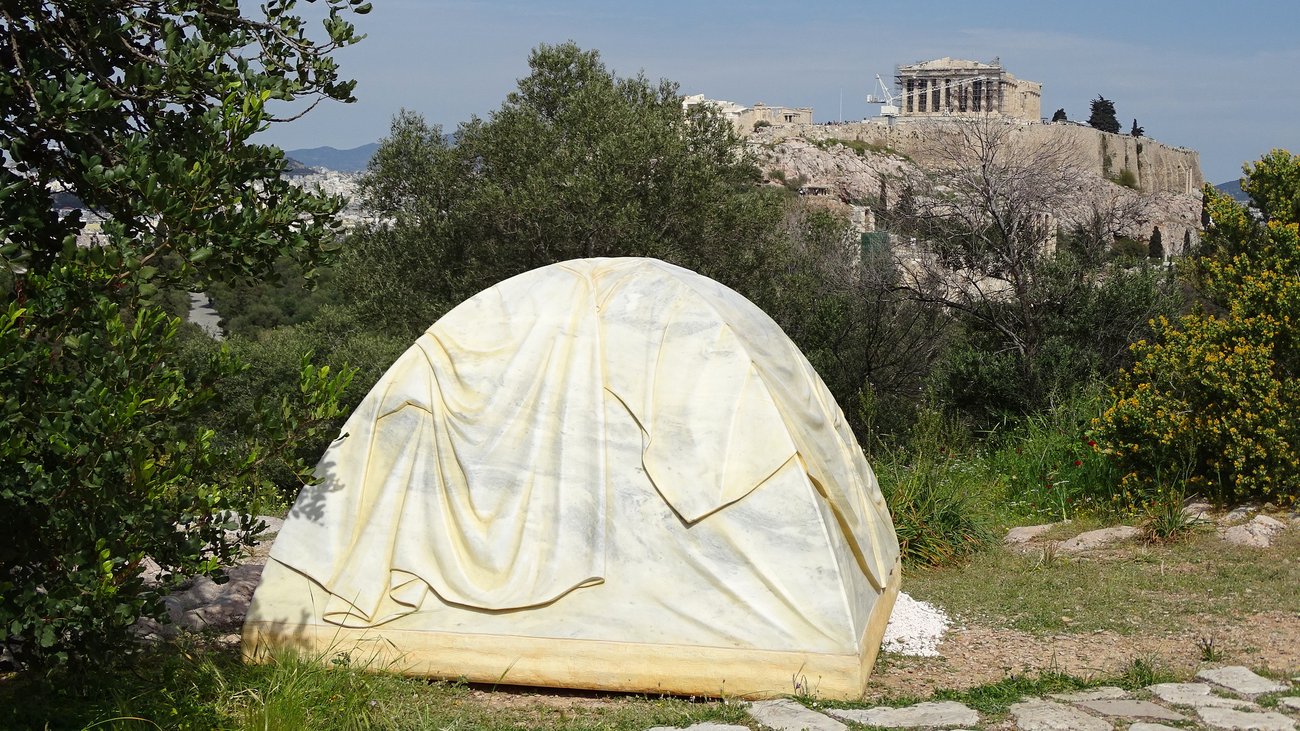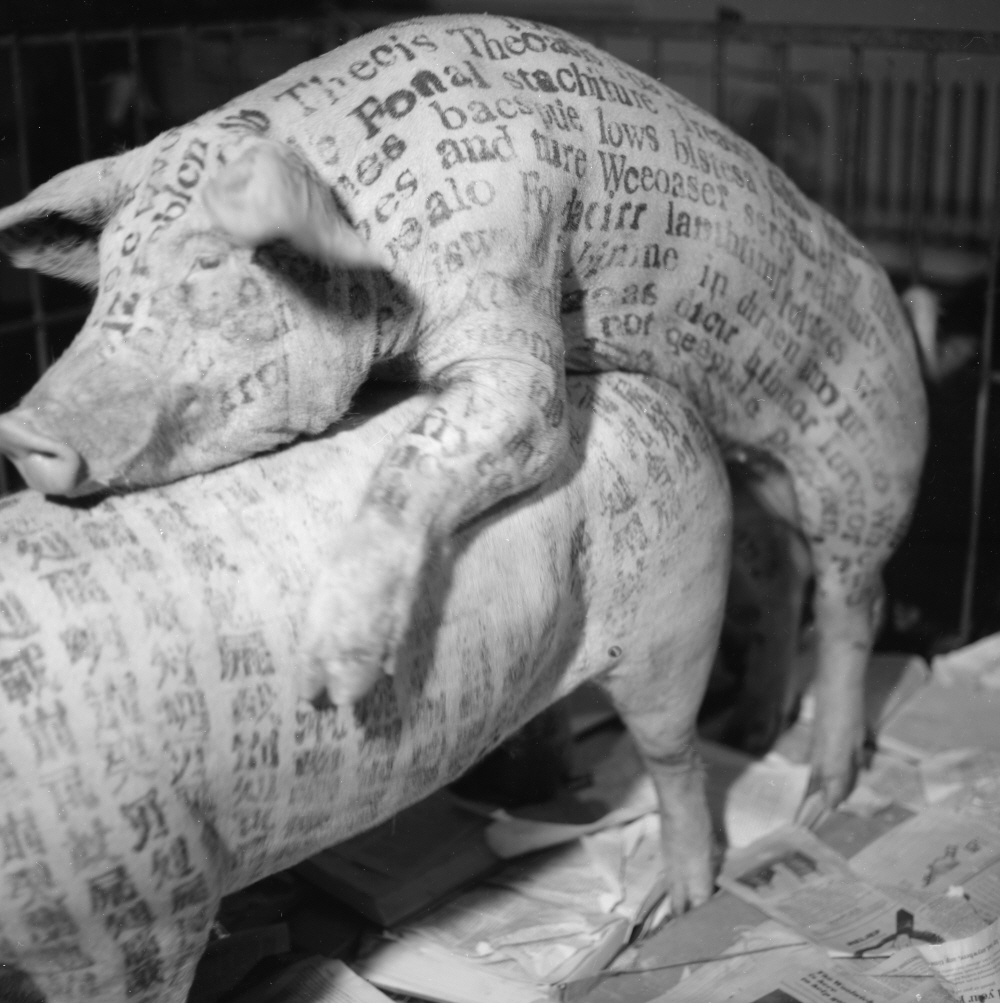July 2018

Miodrag Živković. Monument to the Battle of Sutjeska. 1965-71. Tjentište, Bosnia and Herzegovina. Photo: Valentin Jeck.
Toward a Concrete Utopia: Architecture in Yugoslavia, 1948–1980
Museum of Modern Art, New York
Open July 15
From Sarajevo, head south on the M20 motorway until the road signs change from Roman to Cyrillic. Drive on into the Republika Srpska, and continue into the Sutjeska National Park—stay on the main road; the area is still studded with landmines. Soon, on your right, you will see two huge concrete wings rising from the vale. You’ve reached the Valley of Heroes Monument, built in 1971 outside the Bosnian town of Tjentište: a brace of abstract cement crags, their rugged faces tilting in and then shearing out towards the forest, that commemorates the fallen of a particularly hopeless World War II battle. Now this and other spomeniks (“monuments,” in Serbo-Croatian), dimmed by grime, appear on viral slideshows aimed at hipsters born after the Wall fell; you may have seen this one on the cult Instagram account @socialistmodernism, amid crumbling tower blocks and palaces of the people, wrung through the same filters used by pastry photographers. At press time, the account had more than 144,000 followers—among them @martino.stierli (2,067 followers), MoMA’s chief curator of architecture, who’s organizing this major show of one of the last untold stories of modernism and nationalism.
Yugoslavia was a jury-rigged state, born from the ruins of 1918, and its interwar architecture reflected its cosmopolitan roots: Zagreb’s boulevards were lined with Viennese-style townhouses, and Jože Plečnik, also Vienna-trained, papered Ljubljana with national-romantic ornament. The country turned communist in 1945, but Tito broke with the Soviet Union three years later, when this show starts its narrative. And Yugoslavian architecture, even as it expressed socialist ambitions through collective housing and monumental construction, also offered far more room for individual voices than Poland, Romania, or even East Germany. It wasn’t just in the spomeniks’ wild abstraction, so far from the socialist realism enforced elsewhere; Belgrade and Sarajevo got new International Style edifices that would not have been out of place on Park Avenue, while architects like Slovenia’s Edvard Ravnikar and Croatia’s Vjenceslav Richter imagined frantic, even rebellious structures that made concrete appear lightweight. These figures had international impact too: Yugoslavia was a founder of the Non-Aligned Movement, which (at least officially) aimed to ensure a healthy distance from both the Cold War’s great powers, and exported architects and contractors to Ghana, Egypt, and Iran.
At MoMA the story cuts off in 1980: before the Sarajevo Olympics, before the genocides of the 1990s, and before, too, the arrival of capitalism that transformed both the landscape of the former Yugoslavia and its western appeal. (There is now an Aman hotel in Montenegro, minutes away from an abandoned spomenik on the shore of Lake Skadar.) It’s so easy, following along on your favorite socialist Pinterest account, to grow romantic about futures that never came. The harder project is to look with historical dispassion at monumental works like the Genex Tower, the tallest residential building in Belgrade, rising like a concrete monster out of the Serbian capital’s Brasília-like new town. Today you can rent an Airbnb in the Genex; a resident will clear out for $32 a night.

Keith Sonnier
Parrish Art Museum, Water Mill, N.Y.
Opens July 1
The man of the summer on the east end of Long Island is this postminimalist who uses neon tubes — spindly and pliable where Flavin’s were thick and uniform — to create drawings in space. This small retrospective takes place at the Hamptons’ leading museum, housed in a Herzog and de Meuron building from which you can watch the traffic on Route 27; nearby, at the Dan Flavin Art Institute in Bridgehampton, is a restaging of a major work from 1970 integrating neon, rubber, and strobe lights.

49th Rencontres d’Arles
Arles, France
Opens July 2
Europe’s most important annual photography showcase gets underway again in the south of France, with dozens of solo exhibitions and thematic shows scattered throughout this lovely Roman town. We’re most excited for the exhibition by Wiktoria Wojciechowka, the brilliant Polish photographer who created the portfolio for Even’s current issue; there are also outings from Jean-Luc Godard, Robert Frank, and Julien Creuzet. You should also visit Arles’s two other key institutions: the LUMA Foundation and the Fondation Vincent Van Gogh, a lovely museum currently hosting an intriguing show on late modernism by Bice Curiger.

Amsterdam, The Magic Center
Stedelijk Museum Amsterdam
Opens July 7
In the late 1960s, the Dutch capital became an epicenter of European counterculture, and not only because of its coffee shops. This substantial exhibition looks at the psychedelic side of Amsterdam’s postwar art scene, where mordant conceptualists and underdressed performance artists mingled in inflatable architecture.

Rebecca Belmore
Art Gallery of Ontario, Toronto
Opens July 12
Based in Vancouver and a member of the Lac Seul First Nation, Belmore makes sculpture and installations that directly interrogate Canada’s history of colonization and treatment of women, many of which make use of full-sized casts of models’ bodies. If her sculptures often get a bit too literal for her own good, this substantial retrospective, coming after her appearances at the Venice Biennale and Documenta, promises to reveal the passion and the conviction that lie beneath them.

David Wojnarowicz
Whitney Museum of American Art, New York
Opens July 13
When the artist and AIDS activist died, at age 37, his friends honored his last, furious request: to scatter his ashes on the White House lawn. At the time the Whitney first conceived this retrospective, they could not have imagined an even grimmer presidency than the artist endured — and Wojnarowicz’s engaged, unsparing paintings and photographs will surely have a new bite.

FRONT International
Cleveland Museum of Art, Museum of Contemporary Art Cleveland, and elsewhere
Opens July 14
Cleveland has some of the most impressive museums in the United States (not to mention the greatest orchestra in the country), but its cultural clout has too rarely radiated beyond the midwest. This new triennial aims to change that, though it’s had a rough birth: its co-director Jens Hoffmann resigned in November, shortly before the Jewish Museum dismissed him after sexual harassment claims. Michelle Grabner, the remaining artistic director, curated the most irritating third of the 2014 Whitney Biennial; we wish we were more confident about this.

Food for the Eyes
Mucem, Marseille
Opens July 19
Before every dinner guest became a smartphone paparazzo, French photographers, professional and amateur alike, turned to the table and market hall to capture a national spirit. Check out this uncommon exhibition of images of eating, running parallel to the Rencontres d’Arles, and then go for bouillabaisse.

Xu Bing
Ullens Center for Contemporary Art, Beijing
Opens July 21
The most literary of the Chinese artists to emerge after the Cultural Revolution, Xu is best known for his monumental Book From the Sky, whose calligraphic scrolls are composed of thousands of meaningless characters. This retrospective comes after Xu was censored at the Guggenheim; it will be a supreme irony if the CCP offers him more freedom of expression than Facebook.